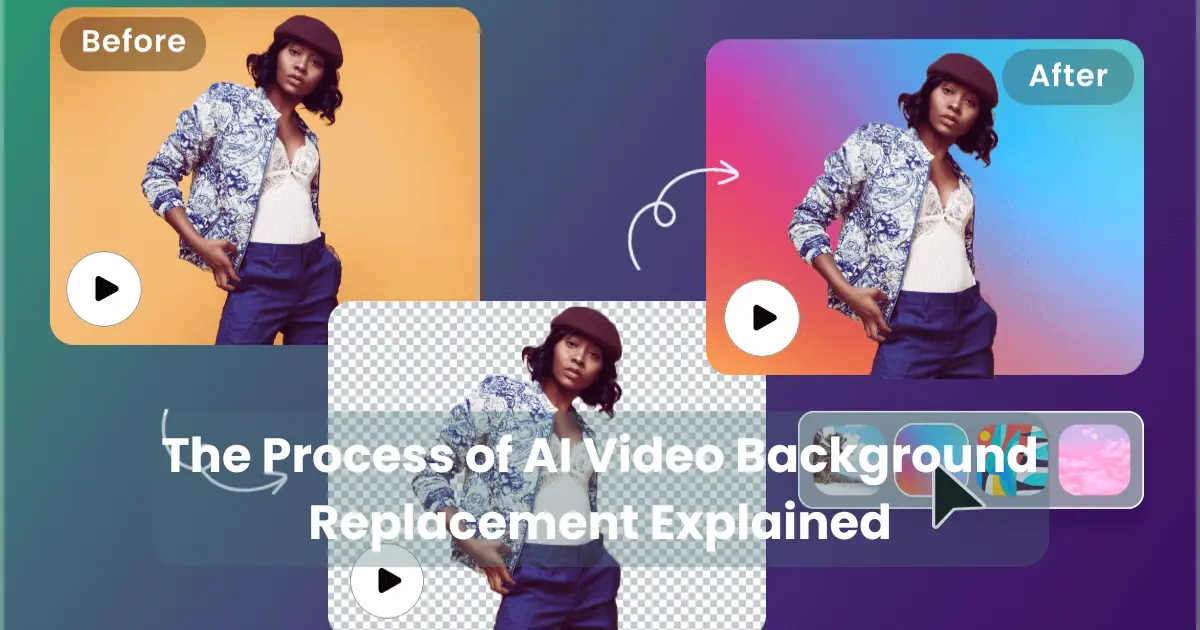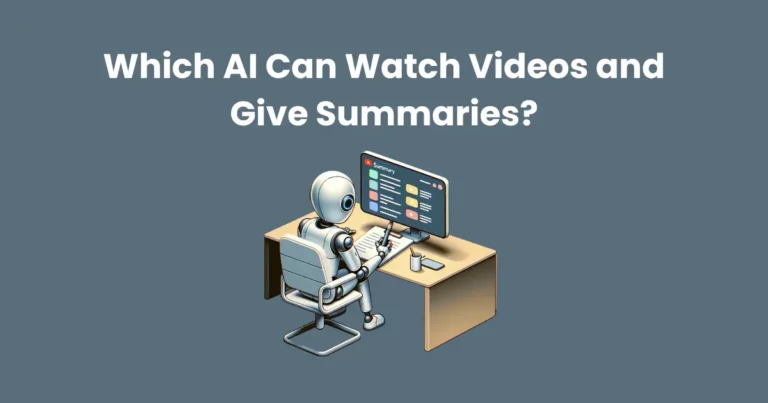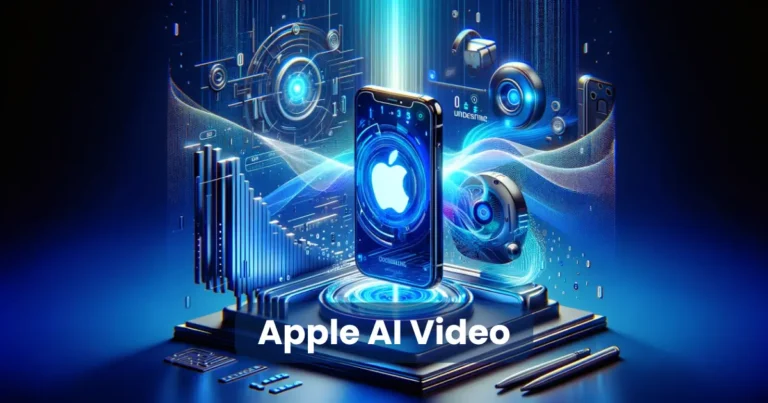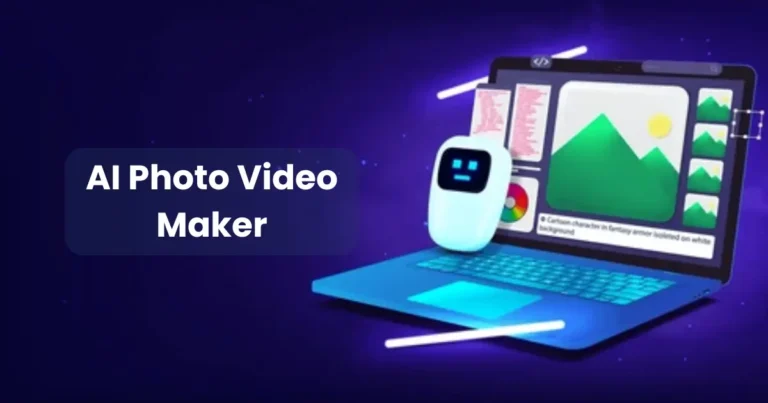The Process of AI Video Background Replacement Explained

Contents
In the rapidly advancing field of digital media, the process of AI video background replacement explained clearly can offer a major advantage to content creators and businesses alike. With this innovative technology, video backgrounds can be changed effortlessly without using a green screen, thus saving time and reducing production costs.
Traditionally, complex editing tools and controlled environments were required to alter video backgrounds. However, thanks to artificial intelligence, the need for such setups has been minimized. Through machine learning and computer vision, backgrounds are now detected, isolated, and replaced with remarkable precision. As a result, even beginners can achieve professional-grade results using accessible software tools.
Moreover, this transformation has not only simplified post-production workflows but has also expanded the creative possibilities for educators, marketers, filmmakers, and influencers. Therefore, understanding the process in detail is crucial for anyone looking to leverage this powerful capability in their video projects.
What Is AI Video Background Replacement?
AI video background replacement is a technique that enables creators to swap out the background of a video without using a traditional green screen. Instead of relying on manual keying or chroma-key technology, artificial intelligence is used to detect and separate the subject from the surrounding environment automatically.
Essentially, deep learning models analyze each frame of the video to identify the foreground—usually a person—and distinguish it from the background. Once the separation is complete, the original background can be removed and replaced with any image, video, or animated environment.
Thanks to this AI-driven approach, the process becomes faster and more accessible. For instance, content for social media, virtual meetings, advertisements, or e-learning can be enhanced with custom backgrounds in just a few clicks. Moreover, the results are typically more natural and less prone to visual errors than traditional methods.
Ultimately, understanding this technology is essential when learning about the process of AI video background replacement explained in modern, real-world applications.
How AI Video Background Replacement Works
Understanding the process of AI video background replacement explained step by step reveals how intelligent systems streamline what was once a highly technical task. Let’s explore each phase of the workflow.

1 Data Input and Scene Detection
First, a video file is uploaded to an AI-based editing platform. Immediately, the software begins analyzing the scene using pre-trained machine learning models. These models recognize human figures, objects, and motion within each frame, setting the stage for accurate background isolation.
2 Segmentation and Background Isolation
Once the subject is identified, the AI performs semantic segmentation. In other words, it classifies each pixel in the frame to determine whether it belongs to the foreground or the background. During this process, the background is digitally separated from the subject, even if lighting conditions or camera angles vary.
3 AI Model Processing
Next, advanced algorithms refine the separation. The edges around the subject are smoothed, and any blending errors are corrected. At this stage, the system ensures that hair, motion blur, and transparent objects like glasses are handled with precision. Consequently, the transition from the original scene to the new background appears seamless.
4 Background Selection and Application
After segmentation is completed, users can choose a new background—either from built-in templates or by uploading a custom one. The selected background is then applied in real-time or through rendering, depending on the platform used. Additionally, color correction may be automatically applied to match the lighting and tone of the subject with the new scene.
5 Rendering and Export
Finally, the video is rendered with the new background. In this step, all layers—foreground and replacement background—are combined into a final file. Because of AI acceleration, this can be done in a fraction of the time traditional methods required. Once the process is complete, the video can be exported in various formats suitable for sharing or publishing.
Through each of these stages, the process of AI video background replacement explained here demonstrates how automation and artificial intelligence work hand in hand to produce clean, polished results with minimal user effort.
Tools Used in AI Video Background Replacement
Now that the process of AI video background replacement explained step by step has been covered, it’s important to explore the tools that make it all possible. Fortunately, several user-friendly platforms have integrated AI to simplify this task for professionals and beginners alike.

1. Runway ML
Runway ML offers a suite of creative AI tools, including a powerful background removal feature. It allows users to isolate subjects in videos and replace backgrounds without needing any technical expertise. Since it runs in the cloud, heavy processing is handled remotely, ensuring smooth performance even on standard devices.
2. Unscreen
Unscreen specializes in automatic background removal for videos and GIFs. Without requiring a green screen, it uses AI to analyze each frame and replace the background with another image, video, or solid color. Best of all, it works directly in your browser.
3. Kapwing
Kapwing is a collaborative video editor that includes AI-powered background removal features. Designed for teams and creators, it makes video editing fast and intuitive. The platform supports custom uploads, smart resizing, and seamless exports, making it a go-to tool for content creators.
4. Adobe Premiere Pro (with AI plugins)
While Adobe Premiere Pro is not inherently AI-powered for background replacement, various plugins and integrations—such as Adobe Sensei and third-party tools—have added these capabilities. For users already working within Adobe’s ecosystem, these plugins enhance workflow without a steep learning curve.
5. Descript
Descript offers AI-based video editing tools, including background replacement and screen recording. Although more focused on podcast and voice content, its growing video toolkit is gaining popularity for remote presentations and tutorials.
Each of these tools plays a crucial role in making the process of AI video background replacement explained here not only possible but also accessible and efficient. Whether you’re creating marketing videos, virtual lessons, or personal content, these platforms reduce production time and improve quality.
Benefits of AI Video Background Replacement
As the process of AI video background replacement explained throughout this article reveals, this technology offers more than just a shortcut—it brings tangible benefits that impact production quality, cost, and accessibility.

1 Time Efficiency
First and foremost, AI video background replacement saves significant time. Traditional editing methods require manual masking, green screen setups, and hours of rendering. In contrast, AI handles these tasks automatically, allowing creators to focus more on storytelling and less on technical execution.
2 Cost-Effectiveness
Since physical green screens and expensive lighting setups are no longer essential, production costs are dramatically reduced. Additionally, many AI-powered tools offer free or affordable plans, making high-quality editing available to freelancers, educators, and small businesses.
3 Increased Accessibility
Thanks to intuitive interfaces and no-code solutions, even those with no prior editing experience can achieve professional results. Whether used in education, marketing, or social media, these tools democratize video production like never before.
4 Creative Flexibility
With the ability to swap backgrounds instantly, creators can experiment with various visual styles and locations. This opens up endless creative possibilities—whether you want to simulate a news studio, a beach scene, or a digital classroom environment.
5 Enhanced Professionalism
By replacing noisy or unappealing backgrounds, users can maintain a polished, distraction-free appearance in their videos. This is especially useful for virtual meetings, online courses, or promotional content where visual credibility matters.
Clearly, these advantages demonstrate why the process of AI video background replacement explained here is transforming how videos are made in every industry.
Common Use Cases Across Industries
Once the process of AI video background replacement explained earlier is understood, its widespread use across industries becomes clear. From education to entertainment, AI-powered background editing is reshaping how professionals communicate visually.

1 Education and E-Learning
In the education sector, teachers and trainers often need engaging video content. AI background replacement allows them to record lessons from home while appearing in a virtual classroom, lab, or presentation room. This keeps students focused and enhances learning experiences.
2 Marketing and Advertising
Marketers use AI to produce branded content faster and more creatively. Instead of booking multiple locations, they can film one video and apply various backgrounds for different campaigns. As a result, campaigns become more dynamic and cost-effective.
3 Film and Entertainment
Although high-end productions still use green screens, independent filmmakers and video editors now rely on AI tools for short films, music videos, and even YouTube content. It’s no surprise that the process of AI video background replacement explained in detail is now part of many digital storytelling workflows.
4 Corporate Communications
Businesses use AI-based background replacement for internal videos, training modules, or executive updates. A professional setting can be added digitally, helping maintain brand consistency—even if the video was recorded remotely.
5 Social Media and Content Creation
Influencers and streamers benefit from fast, creative editing. With AI, they can switch backgrounds to reflect different moods, themes, or sponsors. In platforms like TikTok and Instagram, this flexibility leads to more engaging and visually appealing posts.
6 Virtual Events and Remote Work
AI background tools are increasingly popular in webinars, virtual events, and online meetings. Users can hide cluttered rooms or promote branded visuals effortlessly—enhancing both privacy and professionalism.
Clearly, across every industry, the process of AI video background replacement explained here is enabling a new level of creative freedom and visual consistency.
Challenges and Limitations
Although the process of AI video background replacement explained above offers many advantages, it’s not without its challenges. Understanding these limitations helps users set realistic expectations and choose the right tools for their needs.
1 Accuracy in Complex Scenes
One major limitation arises in videos with complex or dynamic backgrounds. When the background contains movement or shares similar colors with the subject, the AI may struggle to make a clean distinction. As a result, some edge artifacts or flickering may appear, especially around hair or fast-moving limbs.
2 Lighting and Shadows
For the AI to work effectively, consistent lighting is crucial. Uneven or low lighting can confuse the model, leading to blurry edges or ghosting effects. This issue is especially noticeable in DIY home setups, where lighting may be difficult to control.
3 Hardware Limitations
Although many tools are cloud-based, real-time background replacement (such as in video conferencing) still demands significant processing power. On older or low-spec devices, performance may suffer—causing delays or reduced visual quality.
4 Lack of Contextual Awareness
AI models typically don’t understand the context of the scene. For example, if a subject interacts with their environment (like sitting in a chair or holding a translucent object), the software may incorrectly remove or distort parts of the image.
5 Privacy and Data Concerns
Because many AI platforms are web-based, users must upload videos to remote servers. This raises valid concerns about data privacy, especially when working with sensitive or proprietary content.
Despite these limitations, the process of AI video background replacement explained through real-world use cases and tool reviews remains an efficient solution—especially when used with care and proper setup.
Future of AI in Video Editing
As the process of AI video background replacement explained in this article becomes more widespread, it signals a larger transformation across the entire video editing industry. Artificial intelligence is no longer just an enhancement—it is rapidly becoming the foundation of modern content creation.

1 Real-Time Processing and Augmented Reality
In the near future, AI will offer real-time video background replacement with augmented reality (AR) overlays. This will allow content creators to interact with digital elements live, blending real and virtual environments seamlessly—ideal for live streaming, virtual events, and gaming.
2 Smarter Contextual Understanding
AI systems are expected to evolve beyond simple object detection. Soon, they will recognize context, depth, and emotional tone, leading to smarter background placement that complements the subject’s mood or content theme. This shift will enhance storytelling possibilities across all platforms.
3 Full Automation of Post-Production
Currently, many editing tasks—like background adjustment, color grading, and object tracking—require manual input. However, AI is on track to automate these processes, allowing creators to generate polished videos with minimal effort or expertise.
4 Democratization of Filmmaking
As tools become more affordable and accessible, independent creators will be empowered to produce high-quality content without the need for large studios. This democratization will unlock new voices and styles in filmmaking, education, and digital marketing.
5 Ethical and Creative Challenges
While the benefits are immense, the growing use of AI will also raise creative and ethical concerns. Misinformation, deepfakes, and over-reliance on automation could challenge content authenticity. As innovation continues, regulation and digital literacy will play critical roles.
In conclusion, the process of AI video background replacement explained throughout this article represents just one piece of a much larger puzzle. As AI evolves, it will continue to reshape not just video editing—but the way we communicate, learn, and share stories on screen.
Conclusion
To summarize, the process of AI video background replacement explained in this guide reveals a transformative shift in how video content is produced. From simplifying complex post-production tasks to unlocking new creative possibilities, AI has made professional-grade editing accessible to nearly everyone.
While challenges such as lighting inconsistencies, hardware limitations, and data privacy still persist, the benefits—ranging from cost efficiency to increased creative freedom—far outweigh the drawbacks for most users. Moreover, as AI technology continues to evolve, these obstacles are likely to diminish with time.
Across industries such as education, entertainment, marketing, and corporate communications, this innovation has proven to be not only valuable but essential. Looking forward, the future of video editing will undoubtedly be shaped by AI—pushing the boundaries of what’s possible with just a camera and a smart tool.
Ultimately, the process of AI video background replacement explained here reflects a broader movement toward smarter, faster, and more accessible content creation—one that empowers storytellers, educators, and professionals alike.






